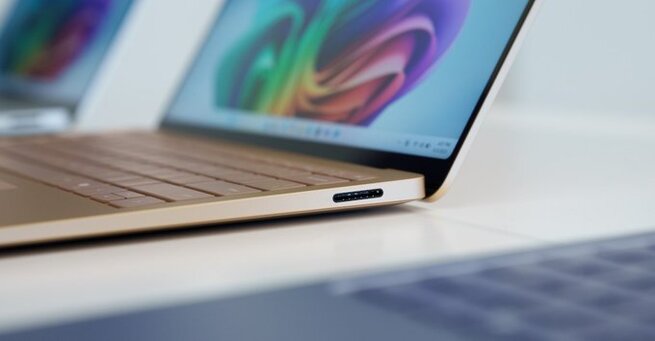
Microsoft has made a bold move with its new Surface Pro 12-inch and Surface Laptop 13-inch models, both of which abandon the long-standing Surface Connect port in favor of USB-C charging. If you’ve been wondering why Microsoft switched to USB-C or how this affects the future of Surface devices, you’re not alone. The shift marks the end of an era for the proprietary magnetic charging port that’s been a staple in Microsoft’s Surface lineup for years. This change reflects the company’s growing confidence in USB-C technology and aligns with broader trends in the tech industry.
For years, Microsoft’s Surface devices, including the Surface Pro and Surface Laptop, used the Surface Connect port for charging. While USB-C had been a frequent request from consumers and tech enthusiasts, Microsoft initially resisted, opting instead for a Surface-specific charging solution. The company even developed a USB-C dongle to bridge the gap for users who wanted compatibility with USB-C chargers. Panos Panay, former head of the Surface division, famously joked that the dongle was for "people who love dongles." However, with the launch of the Surface Pro 12 and Surface Laptop 13, it's clear that Microsoft has embraced USB-C charging for good.
This move to USB-C brings a number of benefits. It not only simplifies charging but also improves device compatibility. Users can now charge their Surface devices with a standard USB-C charger, which is widely available and commonly used across other tech devices, such as smartphones, tablets, and laptops. Microsoft’s decision to eliminate the Surface Connect port ensures a more streamlined and universal charging experience, making it easier for consumers to manage their devices without needing multiple proprietary chargers.
Additionally, Microsoft is taking a stand on environmental responsibility by no longer shipping chargers with its latest Surface devices. This change, driven by EU e-waste reduction initiatives, encourages consumers to use existing chargers or purchase new ones as needed. By reducing the number of chargers included in each purchase, Microsoft is helping to combat electronic waste and align with global sustainability efforts.
This shift to USB-C charging is just the beginning. As more Surface devices, including future iterations of the Surface Pro and Surface Laptop, likely follow suit, it signals a more unified approach to device connectivity. USB-C’s universal standard is becoming the norm, and with its implementation, Microsoft is positioning itself as a forward-thinking player in the laptop and tablet market.
For users considering upgrading to the new Surface models, both the Surface Pro 12-inch and Surface Laptop 13-inch offer compelling features and performance. With prices starting at $799 and $899 respectively, these devices cater to both personal and professional needs, all while offering the convenience of USB-C charging.
In conclusion, Microsoft’s decision to ditch the Surface Connect port is a significant step in the evolution of its Surface lineup. With USB-C charging now standard on its newest devices, the company is embracing universal compatibility, driving sustainability, and simplifying the user experience. Whether you’re a longtime Surface fan or new to the brand, the latest changes make the Surface Pro 12 and Surface Laptop 13-inch more convenient and eco-friendly than ever before.
𝗦𝗲𝗺𝗮𝘀𝗼𝗰𝗶𝗮𝗹 𝗶𝘀 𝘄𝗵𝗲𝗿𝗲 𝗿𝗲𝗮𝗹 𝗽𝗲𝗼𝗽𝗹𝗲 𝗰𝗼𝗻𝗻𝗲𝗰𝘁, 𝗴𝗿𝗼𝘄, 𝗮𝗻𝗱 𝗯𝗲𝗹𝗼𝗻𝗴. We’re more than just a social platform — from jobs and blogs to events and daily chats, we bring people and ideas together in one simple, meaningful space.